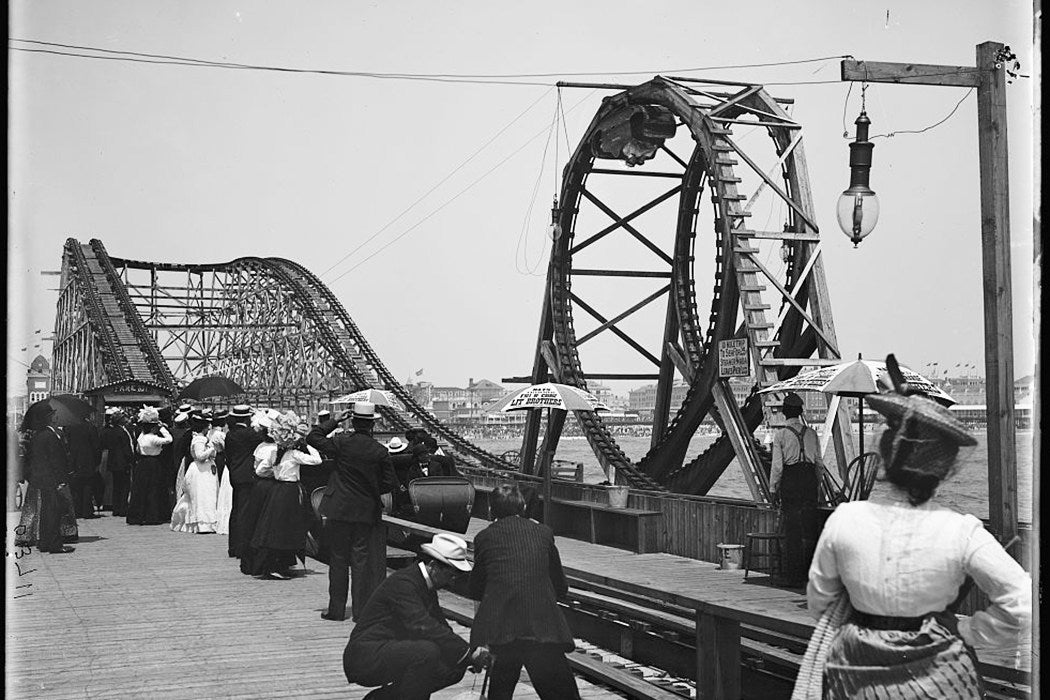It’s summer, and amusement parks are gearing up for high season. The next time you get on a roller coaster and click that harness shut, take a moment to notice that the train has no motor. What makes it go? Why does the train stay on the tracks? (Or maybe you’re happier not knowing.)
Roller coasters provide so many examples of basic principles that they are a staple of physics lessons. A chain hauls the train to the top of the first, highest hill. From the moment of the initial plunge, gravity is responsible for moving the train. At the top of the hill, the train has potential energy (think of potential energy as energy about to happen, e.g. a coiled spring). At the moment of drop, that energy becomes kinetic energy, or the energy of motion. Once it is moving, inertia (the tendency of a moving object to stay in motion, or a stationary object to stay at rest) keeps the train moving. Friction against the track and air resistance act against inertia, so each subsequent hill is lower.
Early coasters were very slow, so coasters were engineered for the illusion of speed through low hanging ceilings and deliberately swaying tracks. As coasters sped up, turns increased the thrill, and hills were parabolic instead of rounded to introduce a feeling of weightlessness at the peak. As the train enters the turn or loop, inertia keeps the train and its passengers moving in a straight line. The train does not jump the track because the banked curves introduce centripetal force to the train. Centripetal force pulls the train inwards into the turn, instead of leaving the train at the mercy of inertia. In a loop, inertia acts on the passengers, pressing them upwards into their seats.
If the train enters a curve too slowly, the train will have insufficient momentum to complete the curve. At that point, gravity is stronger than inertia or centripetal force and the train will fall. Momentum is the train’s mass times its velocity; as velocity increases, so does momentum. Momentum allows moving objects to pick up speed as they move. If velocity drops too far, the train lacks momentum to complete the curve and will fall. Too much momentum and a train will miss the curve and fall.
Early coasters did not account for changes in mass due to weight differences between passenger loads. In extreme cases, this allowed excess momentum to build up and led to derailments. Accordingly, early coasters were plagued by grisly accidents, widely publicized by a sensational press. But don’t worry, modern designs have mostly eliminated these problems.
These days, coasters still rely on physics but include many more safety features. Shoulder harnesses keep passengers safely in place. Trains are anchored by wheels below and alongside the tracks. Computers control the speed. But to make it go, gravity is still required.







